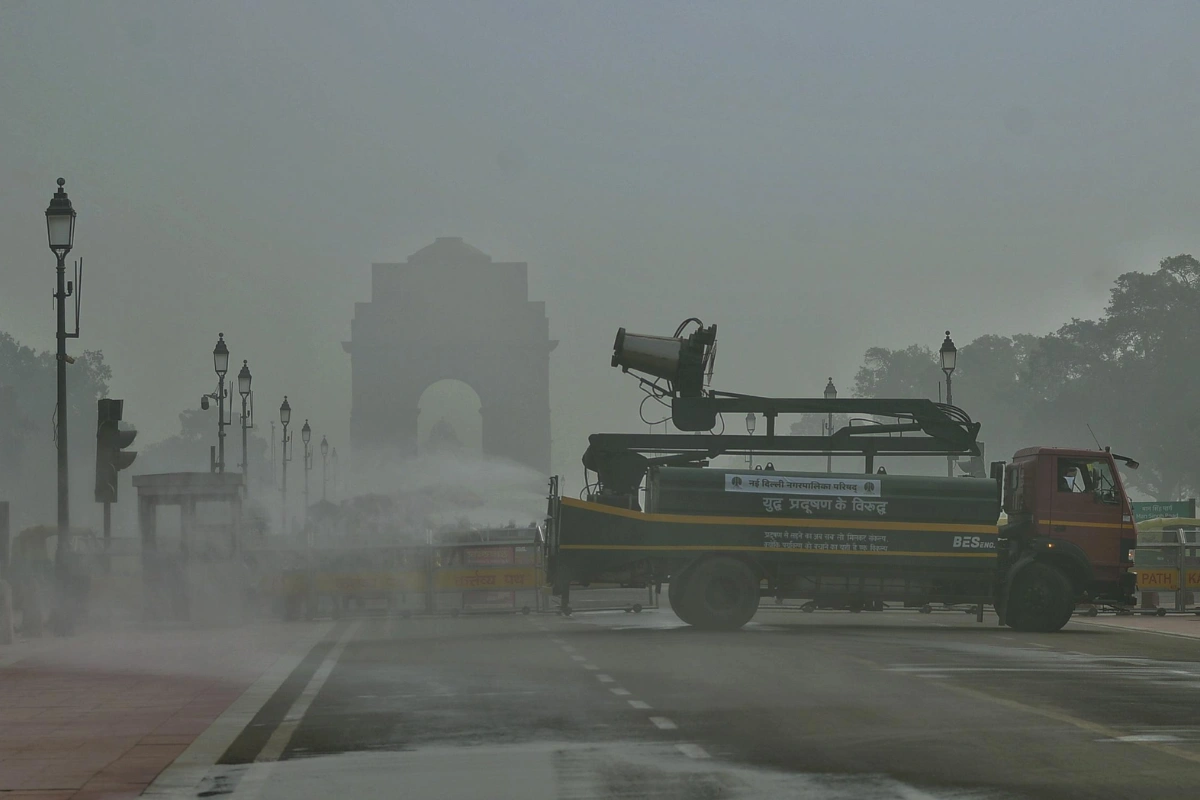
Delhi-NCR woke up to hazardous pollution levels on Saturday, as the Air Quality Index (AQI) plunged deep into the ‘severe plus’ category. According to aqi.in, Delhi, recorded an AQI of 447 at 7 AM, with several monitoring stations exceeding the upper measurable limit of 500.
Air in many areas became almost unbreathable, posing severe health risks to millions.
PM Levels Far Beyond Safe Limits
The concentration of PM 2.5—the most dangerous fine particulate pollutant—surged to 312 micrograms per cubic metre at 7 AM.
PM 10 levels reached 422 micrograms per cubic metre. These figures exceed World Health Organisation (WHO) 24-hour safety limits by a vast margin.
WHO guidelines advise that PM 2.5 should remain below 15 micrograms per cubic metre, and PM 10 below 45 micrograms per cubic metre, making current levels more than twenty times higher than the recommended thresholds.
Residents across Delhi, Noida, Ghaziabad, Faridabad and Gurgaon reported waking up to a thick layer of smog that has persisted through the week.
Visibility remained severely impaired, staying between 800 and 900 metres on Friday morning, according to the Early Warning System for Delhi.
The persistent smog has disrupted routine activities and raised fresh concerns for vulnerable groups such as children, the elderly and those with respiratory ailments.
Neighbouring Cities Also Suffocate
Air quality in surrounding regions mirrored Delhi’s grim condition. Greater Noida registered an AQI of 495 at 7 AM, followed by Noida at 462, Faridabad at 448, Gurgaon at 454 and Meerut at 443.
All locations fell under the ‘severe’ category, reflecting the widespread nature of the pollution crisis.
Weather patterns have contributed significantly to the deteriorating air quality. Morning fog is expected to continue across Delhi, while maximum temperatures are likely to remain around 24 degrees Celsius.
Early Saturday brought dense smog that lingered throughout the day, offering little respite.
Night-time temperatures have also dipped. The minimum temperature at Safdarjung fell to 11.2 degrees Celsius on Friday, 1.1 degrees below normal and slightly lower than the previous day.
Forecasts indicate that temperatures may fluctuate between 9 and 11 degrees Celsius over the coming days, increasing discomfort, especially for those exposed to outdoor conditions.
With pollution levels remaining in the hazardous range, medical professionals are urging residents to stay indoors, use high-quality masks and avoid strenuous outdoor activities.
The combination of toxic air and falling temperatures has heightened health risks, particularly respiratory and cardiac issues.
The worsening conditions have once again triggered urgent debate on long-term solutions to Delhi-NCR’s recurring winter air pollution crisis, highlighting the need for sustained policy action and regional coordination.
Also Read: Tejas Fighter Jet Crashes at Dubai Air Show; Pilot Confirmed Dead
To read more such news, download Bharat Express news apps




















